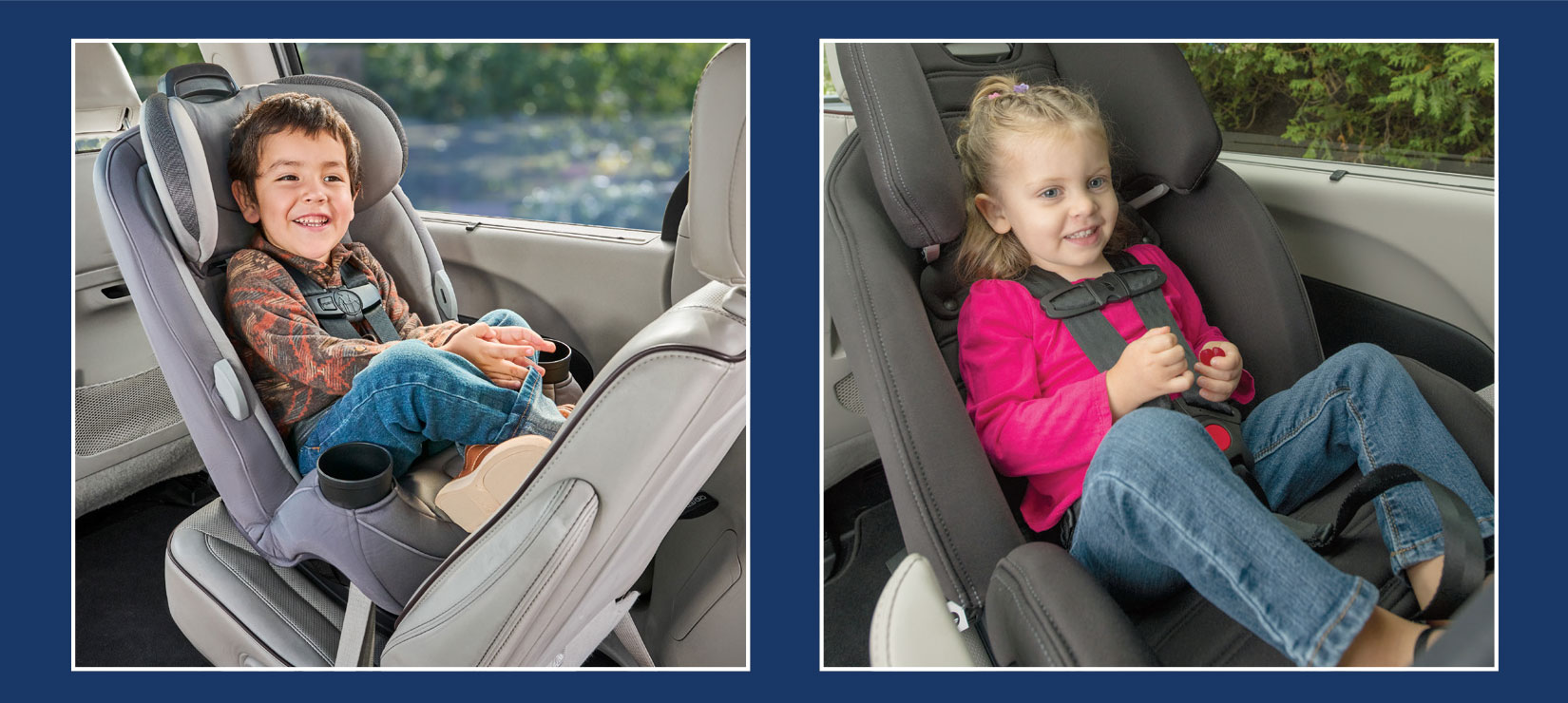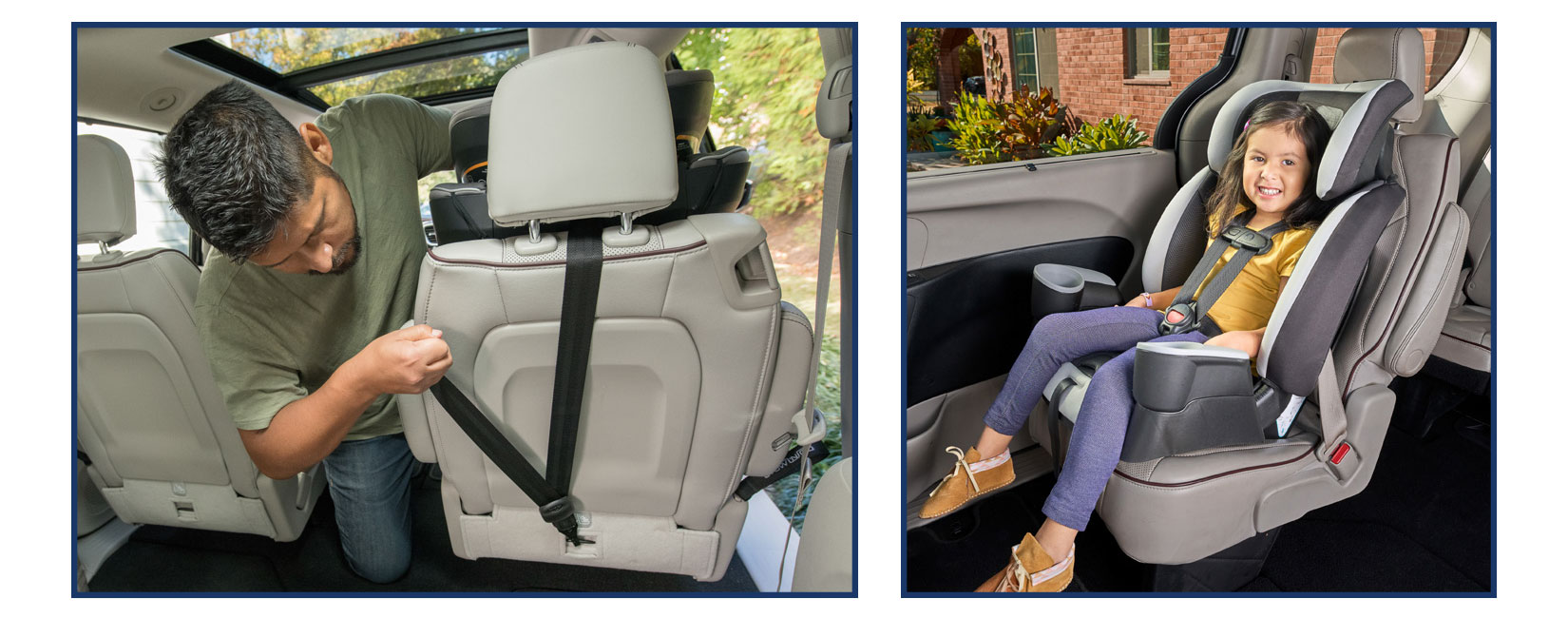Rear-Facing to Forward-Facing: Max it out before making the switch

When can my child switch to forward-facing?
Kids should stay rear-facing for as long as possible. Some seats can be installed both rear-facing and forward-facing. These seats have weight and height limits that can easily keep kids rear-facing through age 3 or 4. Kids should stay rear-facing until they reach the maximum rear-facing weight or height limit of their seat.
Kids are not tiny adults. Their bones and muscles are still growing and their heads are large and heavy compared to the rest of their bodies. Riding rear-facing protects their head, neck, and spinal cord by supporting them together. That’s why it is so important for kids to continue to ride rear-facing until they have reached the maximum for their seat.
What about their legs?
Kids are flexible and often choose to sit in positions that adults would find uncomfortable. While it is normal to be concerned about leg injuries, these injuries are not common and are typically quick to heal. On the other hand, head and spinal cord injuries can affect kids for the rest of their lives. Riding rear-facing protects their head, neck, and spinal cord.
Making the Switch
Kids should stay rear-facing until they reach the maximum rear-facing weight or height limit of their seat. Some seats can be installed both rear-facing and forward-facing. These seats have weight and height limits that can easily keep kids rear-facing through age 3 or 4.
Some changes will need to be made to the car seat when switching from rear-facing to forward-facing. Each car seat is a little different – check the labels on the car seat and the manual for information about your seat.

Use the tether
Car seat tethers are used forward-facing to keep the car seat from moving too far forward in a crash. Look in your vehicle manual to find the correct place to hook the tether.
Make sure your seat can be used forward-facing
Not all rear-facing car seats can also be used forward-facing. Using these car seats forward-facing is extremely dangerous.
Check the car seat recline
Many car seats have different recline positions for rear-facing and forward-facing. Make sure you are using the correct position for forward-facing.
Change harness and buckle positions
There are different rules for harness and buckle positions for forward-facing. Check your car seat manual for instructions on how to change the harness and buckle.
Find your lower anchor limits
Look at the car seat manual and labels for the lower anchor weight limit. If your child is over the weight limit, follow the instructions to install the car seat with the seat belt.


